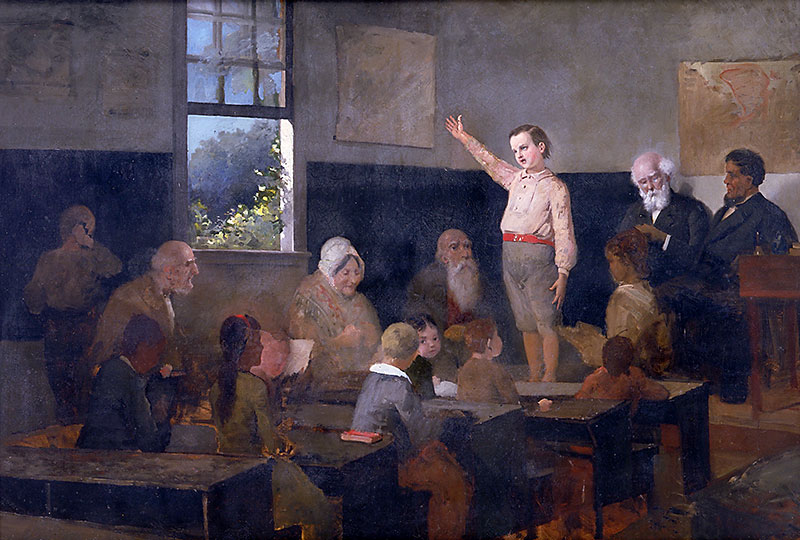Special Features - Slideshow
A Window on the World: Views of 19th Century Life in American Schoolbooks, 1823-1852

"Schoolroom at the Mill and Bars: Recitation Day", James Wells Champney (1843-1903). Image courtesy of Pocumtuck Valley Memorial Association/Memorial Hall Museum.
About this Slideshow
Children in 18th-century America had very limited access to images and information of the world outside their villages. The expanding network of 19th-century schools provided to students an ever wider window on the larger world as technological improvements in printing provided books and maps with more and better illustrations. Schoolbooks record for us educators’ and politicians’ interests in nation building through “subduing the earth” with useful knowledge and skills.
In 17th- and 18th-century America, education was largely tied to religion, specifically learning to read the Bible to secure the child’s and the community’s salvation. Although continuing the earlier tradition of teaching moral behavior, 19th-century schools stressed achievement and virtue through knowledge and celebrated American social, educational, and engineering achievements.